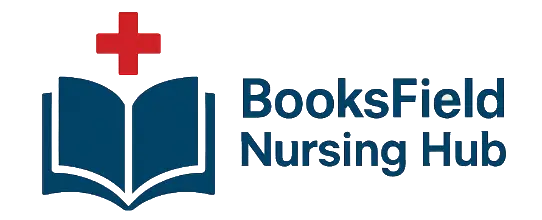Reflective Nursing Journal Homework Help
We craft thoughtful nursing homework reflections using Gibbs, Johns, or Rolfe—connecting events to nursing theory, ethics, and future practice.
Frameworks Supported
- Gibbs’ Reflective Cycle
- Johns’ Model for Structured Reflection
- Rolfe’s What? So What? Now What?
- Integration of nursing theory and evidence
Focus Areas
Clinical communication, ethics, patient safety, teamwork, delegation, cultural competence, and leadership moments from placements.
Writing Reflective Nursing Journals that Earn Top Marks
Reflective journals assess your ability to extract meaning from clinical experiences and translate insights into safer practice. We structure reflections so they are honest, analytical, and aligned to your framework (Gibbs, Johns, Rolfe). The goal is not just to describe what happened, but to demonstrate growth, ethical awareness, and evidence-informed change.
Frameworks and How We Apply Them
Gibbs’ Reflective Cycle
- Description: Concise, factual account without judgment.
- Feelings: Honest thoughts and emotions with professional tone.
- Evaluation: What went well/poorly for patient, peers, and self.
- Analysis: Deeper reasoning using theory, guidelines, or evidence.
- Conclusion: What else could you have done?
- Action Plan: Specific, realistic steps to improve practice.
Johns’ Model
Guided cues prompt exploration of aesthetics (experience), personal (values), ethics (right action), empirics (evidence), and reflexivity (self-awareness).
Rolfe’s Model
We use the What? (event), So What? (meaning), Now What? (action) triad to keep reflections purposeful and concise.
Example Focus (Abbreviated)
Context: First medication pass on a busy Med-Surg unit; near-miss intercepted by preceptor.
Themes: Distraction management, the five rights, barcode scanning compliance, and speaking up culture.
Evidence Links: ISMP safety alerts, CDC hand hygiene guidelines, and literature on interruption reduction strategies.
How We Meet Reflection Rubrics
- Depth over description: We analyze decisions and alternatives, not just recount events.
- Ethical reasoning: Patient autonomy, consent, privacy, and scope of practice are addressed where relevant.
- Actionable learning: Concrete steps for change (checklists, mnemonics, timed self-checks, team huddles).
- Professional voice: Respectful tone with accountability and growth mindset.
Popular Reflection Topics
- Communication breakdowns and tools (SBAR, CUS)
- Delegation and supervision challenges
- End-of-life conversations and ethics
- Medication safety and near-misses
- Interprofessional collaboration
- Cultural humility and patient advocacy
- Conflict resolution and teamwork
- Time management and prioritization
- First code blue or rapid response
- Clinical judgement and cognitive biases
What We Need
- Framework (Gibbs, Johns, Rolfe) and word count
- Prompt or brief description of the event
- Any theory or course concepts to integrate
- Due date and citation style
Extended Reflection Example (Rolfe)
What? During a shift change, I missed a dose timing for a patient’s antibiotic due to concurrent rapid response on the unit. My preceptor caught the delay within 30 minutes and coached me through appropriate escalation and documentation.
So What? The event exposed gaps in my time management and handover clarity. It reinforced the importance of protected medication windows and use of check‑back in noisy environments. Literature on interruptions and med safety confirms that bundling tasks and minimizing non‑urgent interruptions reduces timing errors.
Now What? I will incorporate a timed personal checklist for high‑risk meds, use visual cues at the workstation, and verbalize timing at handover. I will also practice assertive communication to defer non‑urgent requests during the med pass.
Ethical and Cultural Considerations
- Confidentiality when discussing cases in shared spaces
- Respect for patient autonomy and informed decisions
- Culturally safe communication and interpreter use
- Non‑punitive culture and psychological safety in teams
Common Reflection Pitfalls
- Pure description without analysis or learning outcomes
- Disclosure of identifiers—always anonymize details
- Overgeneralized action plans without specificity or timelines
- Inconsistent voice or tone—maintain professional language
Reflection Checklist
- Framework headings present and logically connected
- Specific incident details without identifiers
- Evidence or theory weaved into analysis
- Concrete, time‑bound action plan
Comprehensive FAQs (Extended)
Can you anonymize all identifiers to protect privacy?
Yes. We remove or alter names, dates, room numbers, and any indirect identifiers to maintain confidentiality.
Do you connect reflections to course theory?
We explicitly link experiences to course concepts, models of care, communication frameworks, or ethics principles as required by your rubric.
Will you include an action plan with measurable steps?
Every reflection ends with clear, time‑bound actions, success markers, and follow‑up ideas to demonstrate growth.
Can you write multiple linked reflections across a semester?
Yes. We maintain continuity across entries and show progressive development of skills and insight.
Is it okay to incorporate emotions and challenges?
Absolutely. Professional tone is maintained while acknowledging emotions, uncertainty, and learning points.
Do you add references in reflective writing?
When required, we integrate relevant guidelines or literature and format citations per your style.
How do you handle sensitive scenarios (e.g., end‑of‑life)?
We write with empathy, ethical sensitivity, and respect for privacy, focusing on learning and professionalism.
Confidential and original reflections
We protect your identity and never reuse content.
Create Your Order